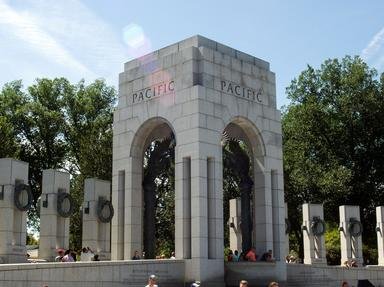Quiz Answer Key and Fun Facts
1. In late 1944, young Hiroo Onoda was sent fresh from his intelligence training to fight in the Pacific during World War II. His first (and only) assignment was to destroy the American airstrip and pier at Lubang Island with the brigade already stationed there. Where is Lubang Island located?
2. Allied troops landed in the area in late February 1945, and shortly after wrested control away from the Japanese. Most of the brigade was killed or surrendered, but Onoda retreated into the wilderness to escape capture. How many other men came with Onoda?
3. Onoda's group subsisted on a small amount of rice they previously had along with coconuts and bananas found in the jungle. Since this could not last forever, how else did the soldiers get food?
4. In October 1945, Onoda's group found a note left by a local villager noting "The war ended on August 15. Come down from the mountains!" Soon after, the Japanese army dropped similar leaflets over the area. What impact did this have on the soldiers in hiding?
5. By late 1949, the group dwindled to three when Yuichi Akatsu left to live on his own. The remaining members began to get even more careful, afraid that Akatsu would give away details of their location. What became of Akatsu?
6. Siochi Shimada lasted until 1954. In 1953, he was shot in the leg by local fishermen, though he was nursed back to health. Over the next year, he became depressed despite his improved health. What reduced the group down to two members?
7. Onoda and Kinshichi Kozuka, the two surviving members, were both declared dead in late 1959. However, on October 19, 1972, a run-in with local authorities proved otherwise, even though its outcome left Onoda to fend for himself in the jungle. What was Kozuka's fate?
8. In 1974, college dropout Norio Suzuki left Japan to search for Lieutenant Onoda. Succeeding where many had failed previously, he tracked down Onoda and attempted to explain that the war had actually ended in 1945. What was Onoda's response?
9. By the time that Hiroo Onoda formally surrendered to authorities, he was 52 years old, and had spent over half of his life fighting a war long since over for the rest of the world. What was President Ferdinand Marcos' response to Onoda's surrender?
10. In 1975, Onoda left Japan to become a cattle rancher in Brazil to escape from the public eye, and married in 1976. He eventually went back to Japan permanently in 1984. In 1996, he returned to Lubang Island to donate $10,000 to a local school. How did Onoda support himself upon his return to Japan?
Source: Author
illiniman14
This quiz was reviewed by FunTrivia editor
bloomsby before going online.
Any errors found in FunTrivia content are routinely corrected through our feedback system.

